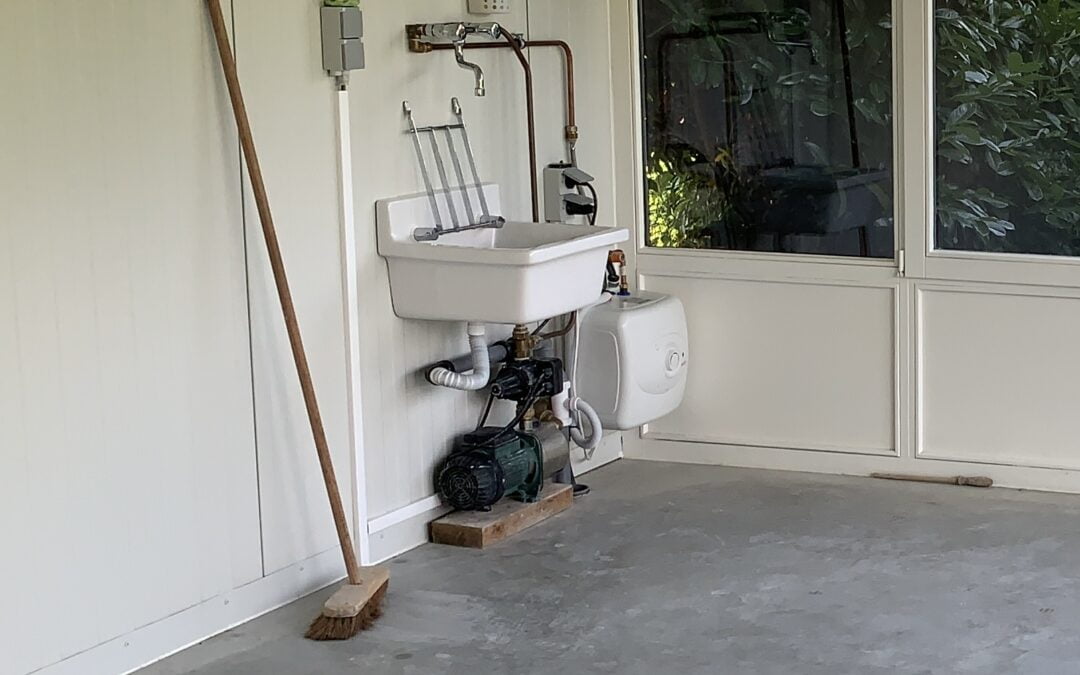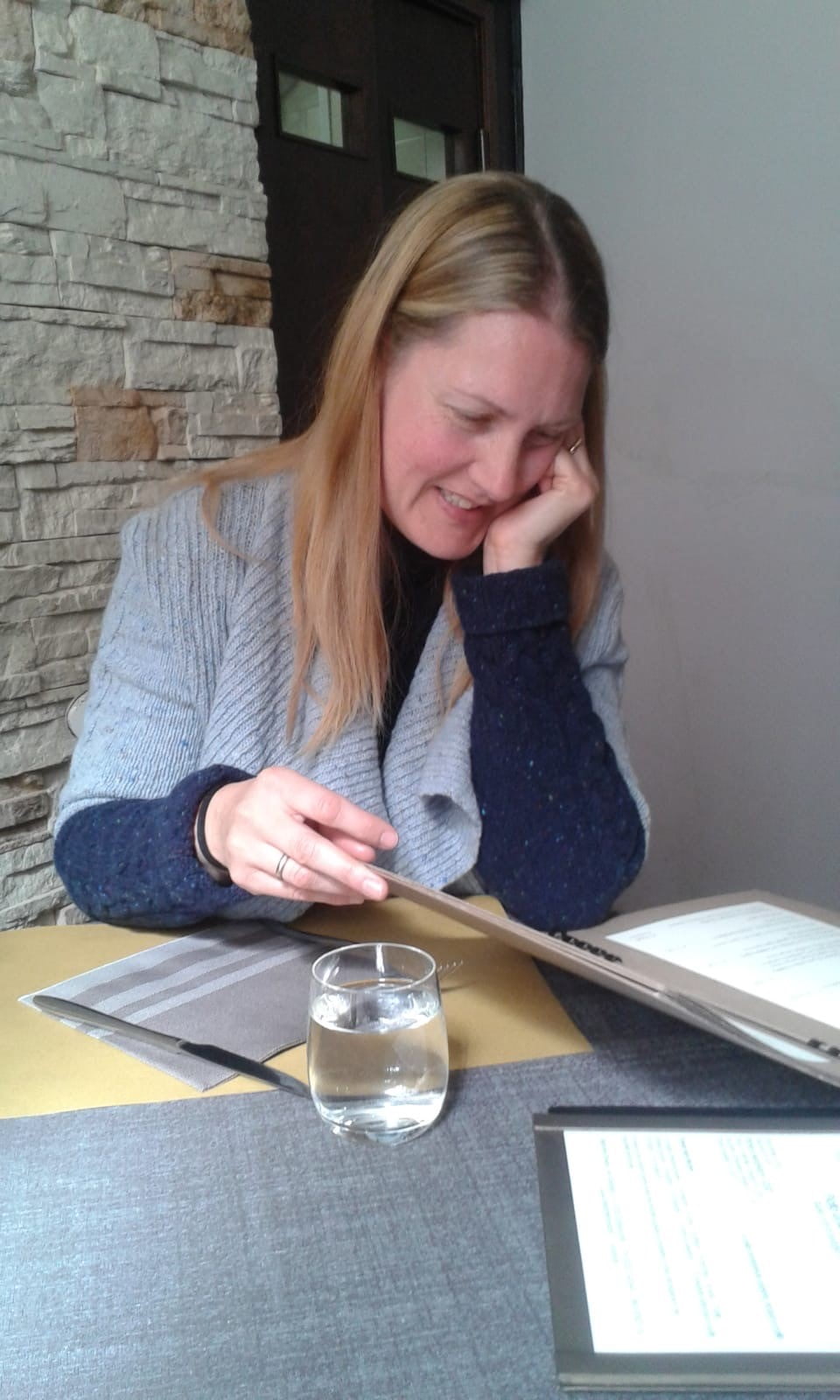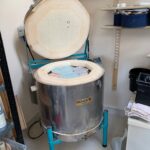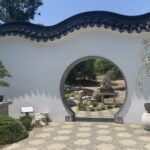After establishing the main ideas on how to plan my new pottery studio, I will now focus on some practical points. This first practical part concerns water and cleaning.
Running water in the studio is not essential, but extremely handy. A lot of potters use buckets of water for cleaning purposes, but running water is so much easier!
For the new pottery I bought a big steel sink. This is like the ones that are used in industrial kitchens. The steel frame makes it sturdy and easy to clean.
Another non essential but extremely useful thing is having access to running WARM water. Have you ever thrown pottery using ice cold water in an cold shed? Ouch! I did and while making pottery is already quite harsh on your hands, using cold water is even worse on your skin. Besides, having warm water running through the drains reduces the risk of clogging.
About clogging drains: be mindful that clay WILL clog your drains! Even when you use boiling water all the time. It is therefore highly recommended to connect your sink to a clay trapping system or sedimentation box.
Fun fact: clay actually sinks in water (WOW, LOL) as clay is mainly made of ground rocks that will thus sink to the bottom of the container leaving clear water on top ready to flow into the sewer.
You can use a homemade system like a double plastic container system which collects the water from the drain of your sink in a smaller container where the clay can settle before overflowing in a larger container from which the water travels from a high placed pipe into the sewer, allowing the clay in the water to sink to the bottom.
The professional systems are divided into three different compartments overflowing from one into the next allowing the clay to settle a lot in the first compartment, a little less into the second and less again in the third. From the latter the water flows into the sewer again from a high placed pipe allowing only the water without sedimented clay to flow out of the trap. Take into account that those traps need to be cleaned out regularly and that is a messy and incredibly smelly business 🤮😷. The sedimented slurry needs to be disposed of in a responsible manner. When only clay, it can be dried out and thrown away. When mixed with glaze residues, it is best disposed of as hazardous waste as it often contains substances which are not good for the environment.
The sink will allow me to wash out my brushes and tools and to collect the water holding low amounts of clay. The heavy clay water will be put in the recycled clay buckets to slack the dryer clay down for it to be recycled.
I will also have the opportunity to use a separate washing machine for aprons and textiles used to wipe off clay hands. This way I do not need to use the washing machine I use for our personal laundry. I am lucky as the previous owner of our house has left behind a relatively new washing machine: great for this purpose!
The washing machine will need to be put in a position to occupy as little place as possible. I am considering to put it in between the sink and the kiln at the far end of the studio if the clay trap fits under the sink. If the clay trap doesn’t fit there, the washing machine might find its place on a platform above the clay trap… we’ll see.
The studio must be frequently wet mopped and from time to time vacuum cleaned (best to use an industrial vacuum cleaner with HEPA filter) in order to avoid the formation of a dusty environment. Clay dust is dangerous as its particles are so small that when breathed in, they sediment in our lungs and may cause silicosis, a non curable and potentially fatal disease. A clean and dust free environment is therefore extremely important. A bucket with a mop to wet clean and sponges for surfaces are therefore a must in the workshop. By doing this you can avoid being paranoid about dusty environments.
A safe working environment can also be enhanced by using a breathing mask when handling powders to make clay or glazes and use water while sanding pottery. It is therefore that when the pandemic broke out, I had already a couple of new PPF2 face masks in house to defend our family from this new and unknown virus at that time. That came in handy!
Is there anything I forgot? Anything you could suggest? I am looking forward to your comments!


 My name is Elisa; I am a woman, a mum, a daughter, a friend and a wife… and a passionate ceramicist/potter.
My name is Elisa; I am a woman, a mum, a daughter, a friend and a wife… and a passionate ceramicist/potter. 



